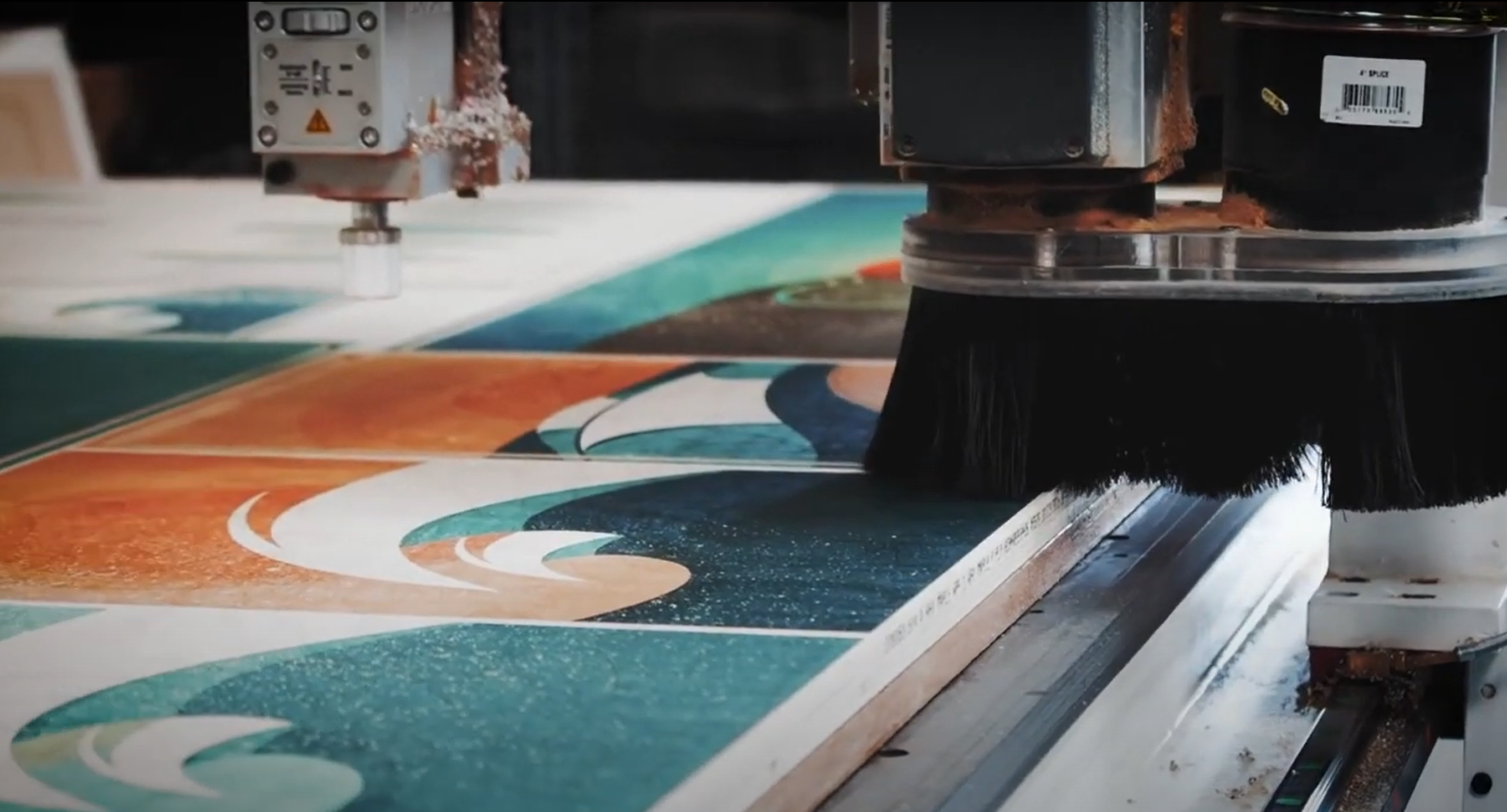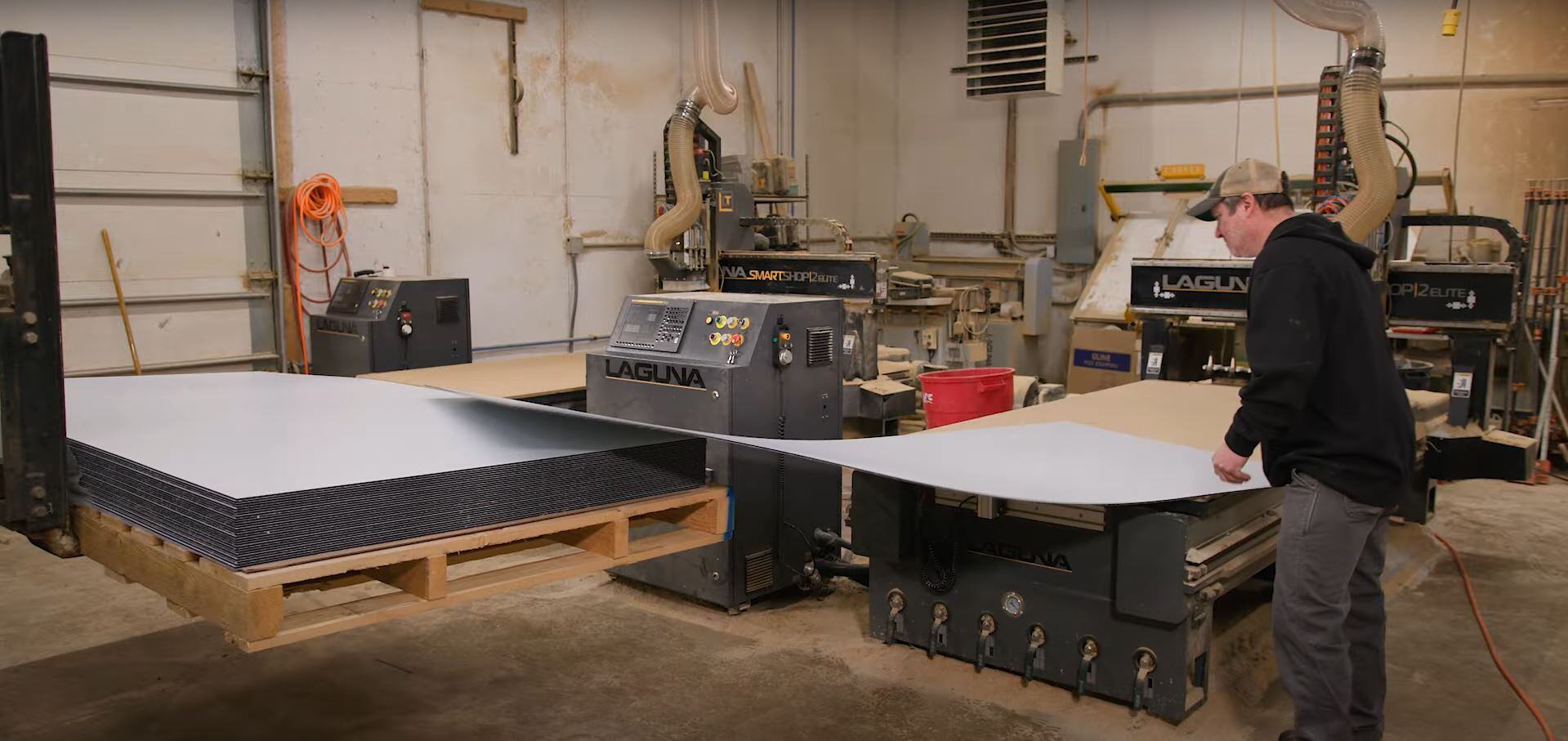Warren Weber has spent a large portion of his career with a focused vision to help woodworkers to be more efficient in their shops, working on product development in a variety of tool categories including router tables, panel saws, table saws, mortising machines, line boring, edge sanders, and drum sanders. Warren now works for Laguna Tools, currently primarily focused on the development of new tools and new tool categories, which has been his primary area of interest in recent decades. His passion in this field has led him to be closely involved with many of the great innovations in drum sanding during his tenure.
In the late 1980’s Warren was working as custom woodworker in the Minneapolis area, when he bought a new drum attachment for his radial arm saw; “I was amazed by the efficiency that I gained in my shop.
I absolutely loved it, but at the same time I knew that the manufacturer could do so much more to make this tool even better for the small shop woodworker. So, I paid them a visit and started barraging them with product development ideas.
Not only were they receptive to my ideas, but within a short period of time, I was working for them full time. I still loved woodworking, but at that point I found my other passion which is driving innovation that helps woodworkers to produce better products more efficiently”.
When Warren got started in the late 80’s, he said “drum sanders were extremely expensive, and therefore were only found in large production woodworking shops. I knew many woodworkers, both hobbyist and professional, and I had never met one that enjoyed hand sanding.
"Our mission was clear; we need to focus on delivering sanding efficiencies to the market at a price point that made the products accessible to small shop professionals and serious hobbyists.”

The first step in that process was removing the dependency on another shop tool “we were fighting a trend of declining interest in the radial arm saw, so we had to figure out how to add a durable motor that could provide appropriate power without breaking the bank for customers”.
Through a lot of research and development, a self-contained drum sander was introduced to the market with a modest price point. This product was instantly popular, but Warren and the team noticed another challenge that needed to be addressed. “Drum sanding requires a consistent feed rate, and that can be hard to maintain when the human operator is the feed motor.
So, our next mission was to add a conveyor system that could maintain a steady rate of material processing. The technology was available on the market but once again our mission was to deliver this important function with high quality but without blowing up the price point on the machine.
"This was tricky, but by working with our suppliers we were able to achieve a great solution with only a modest increase in cost to the customer.”
By that point, small shop drum sanding had really started to take off, and with all of that usage came a new understanding of how these new tools were actually being used. Woodworkers had grown accustomed to the stock removal performance of planers, and that experience was setting their expectations with drum sanding.
Warren said “the laws of physics dictate that the maximum depth of stock removal is limited to the size of the grit on the abrasive, but yet people were attempting to remove 1/8” of stock in a single pass, which led to obvious problems. So, we needed a built-in way to educate users on proper stock removal rates.”

That led to the auto-regulation of the conveyor system that senses excessive load on the system and gives users a warning. That technology is now found on the Intellisand feature on the Laguna Supermax products. “The ideal way to set depth on a drum sander is to lower the drum until it just touches the wood, because additional pressure can cause problems.
The Intellisand feature teaches people how to maintain the appropriate pressure by warning them when they are being too aggressive, and preventing damage to the machine from overloading, stalling or gouging”.

So, what’s next in the world of drum sander innovation? “We’ve recently done a lot of development around metal sanding, to improve surface quality, extend the life of sanding belts, etc.
For woodworkers we’ve completely reimagined the drum sander, and turned it into a platform into which purpose-specific drums can be added for applying interesting textures, distressing wood, sanding curved molding, and other cool applications.
We’re also working on some new product ideas that aren’t ready to be unveiled publicly just yet, but stay tuned because the near future will include some exciting announcements”.
So, the next time you dial your variable speed conveyor to a “sweet spot” feed rate, or see a red light come on that warns you to lighten up your down pressure, give a little nod of recognition toward Minnesota where Warren Weber is continuously working to make your woodshop experience better.




